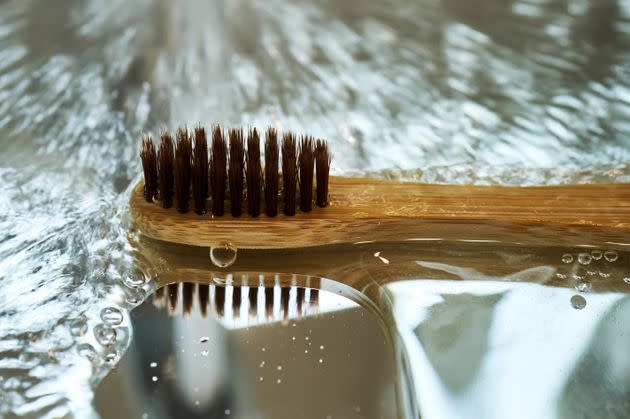I Can’t Believe How We Brushed Our Teeth Before Toothpaste Was Invented

I’m trying to get out of the habit of needing to be entertained during every single thing that I do, meaning that I no longer shower or brush my teeth with the company of music or a podcast to distract me through it.
Why yes, I am a 34 year old iPad child.
This new way of life means that I now have more time to just think and, to be honest, this scared me for a while because I’m anxious and don’t want to let my thoughts run wild but my thoughts are... really boring, actually.
Take for example last night. While I was putting toothpaste on my toothbrush, I wondered what people did before toothpaste and even toothbrushes? Was their breath pongy? Were their gums permanently inflamed?
Well, in the immortal words of Dr Ian Malcolm in Jurassic Park: “Life, uh, finds a way.”
How humans cleaned their teeth before toothbrushes and toothpaste
According to IFL Science: “The earliest indication of dental care can be found on a set of 130,000-year-old Neanderthal molars from a Croatian cave, which show signs of having been repeatedly scraped by some sort of toothpick.
“Unfortunately, no actual picks were discovered alongside the prehistoric remains, but based on the markings, researchers suspect that Neanderthals probably used bits of bone or stiff grass to remove food from between their teeth.”
Bones. Lovely.
Thankfully, this did quickly progress to practices that are still in place today.
According to History: “Before toothbrushes, many used chew sticks, thin twigs they would gnaw on until one end frayed, creating a sort of brush. Chew sticks remain in wide use in some cultures today.”
As for toothpaste, well, surprisingly, that was created first.
Frank Lippert of the Indiana University School of Dentistry wrote in a monograph: “Around 3,000–5,000 B.C., ancient Egyptians first developed a dental cream which contained powdered ashes from oxen hooves, myrrh, egg shells and pumice
“Persians then added burnt shells of snails and oysters along with gypsum, herbs and honey around 1,000 B.C.”

